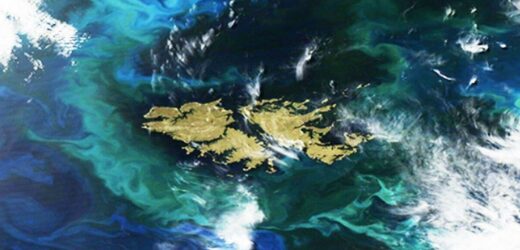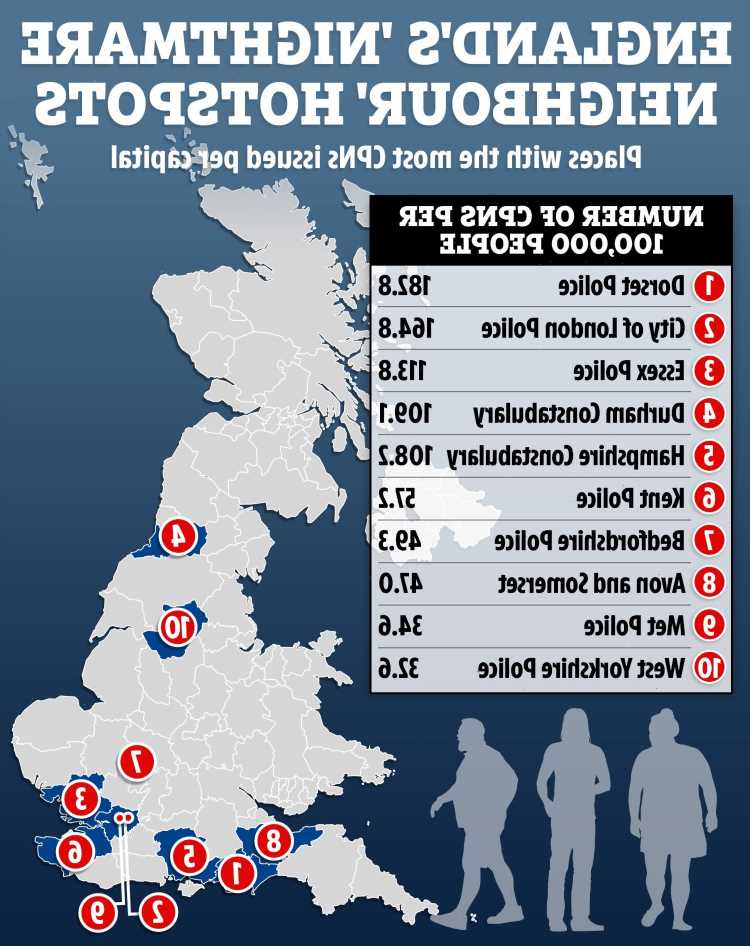Falklands War: Weather threatened UK forces reveals Fox
We use your sign-up to provide content in ways you’ve consented to and to improve our understanding of you. This may include adverts from us and 3rd parties based on our understanding. You can unsubscribe at any time. More info
NASA has published a satellite image of the Falkland Islands, labelling it “off the coast” of Argentina rather than being part of the country itself, effectively denying its sovereignty claim. The US space agency’s photograph of the archipelago shows the proliferation of phytoplankton in the Atlantic ocean. NASA said: “This image of a phytoplankton bloom off the coast of Argentina was acquired on November 21, 2022, with a MODIS instrument aboard NASA’s Terra satellite.”
The space agency wanted to show the “bright colours lighting up the Southern Ocean” that are caused by massive populations of microscopic plant-like organisms called phytoplankton”. It may have not been intended to, but by labelling the islands situated in the South Atlantic Ocean as “off the coast”, NASA may have added to the ongoing feud over the sovereignty of the island.
The Falkland Islands, also known as Islas Malvinas, are a group of more than 700 islands about 500 km (310 miles) east of southern Argentina. Sovereignty over the islands has long been disputed between Argentina and Britain, which in 1982 resulted in an armed conflict during former Prime Minister Margaret Thatcher’s premiership.
But 40 years on from a ceasefire, tensions have reignited recently following events such as the visit of Princess Anne to the territory and the sending of soldiers from Kosovo.
The daughter of Philip and Elizabeth II went to the archipelago on November 18 and laid a wreath at the Liberation Monument. This contains the names of British soldiers who died during the war.


During her visit, she also spoke to the workers who cleared the mines that were left in the fields after the war. Some saw this as a message from the British over their position in the context of the sovereignty debate of the territories in the South Atlantic.
This may have also come as a surprise after the UK opened negotiations to discuss the territorial liberation of the Chagos Islands. This marked a significant reversal of policy after many years of resistance and legal defeats in international courts.
The agreement is aimed at returning former inhabitants of the Chagos archipelago, who the British government forcibly displaced back in the 1960s and 1970s.
Meanwhile, Argentina’s Ministry of Foreign Affairs lashed out at Britain, claiming it made an “unjustified show of force” after soldiers originally stationed in Kosovo were sent to expand the British infantry in the Malvinas Islands.

He said: “The extra-regional military presence in the Islands is categorically opposed to the permanent will of the Argentine Republic to resolve the dispute by peaceful means.”
Argentina argues that it has a right to the islands, which it calls the Malvinas, as it inherited them from the Spanish crown back in the early 1800s.
And an amendment to Argentina’s Constitution in 1994 effectively called on all future governments to commit to “the recovery … and the full exercise of sovereignty” of the Malvinas and other southwest Atlantic territories.
But the islands remain self-governing, despite the British government handling foreign affairs and defence matters. There is no party-political activity on the islands, and islanders voted to remain a British overseas territory back in 2013.
DON’T MISS
UK handed energy ‘jackpot’ – Scotland’s goldmine to export billions [REVEAL]
Kew Gardens botanist found rare plant that was extinct for 70 years [REPORT]
Britons urged to take simple steps to slash energy bills 30 seconds [INSIGHT]


NASA’s latest satellite image of the Falkland Islands was captured on December 19, which snapped “brilliant jewel-toned swirls coloured the dark waters surrounding the sedate landscape of the Falklands Islands in mid-December 2022.”
The space agency added: “The Moderate Resolution Imaging Spectroradiometer (MODIS) on board NASA’s Terra satellite acquired a true-colour image of the spectacular scenery on December 19.”
NASA has been contacted for comment.
Source: Read Full Article


